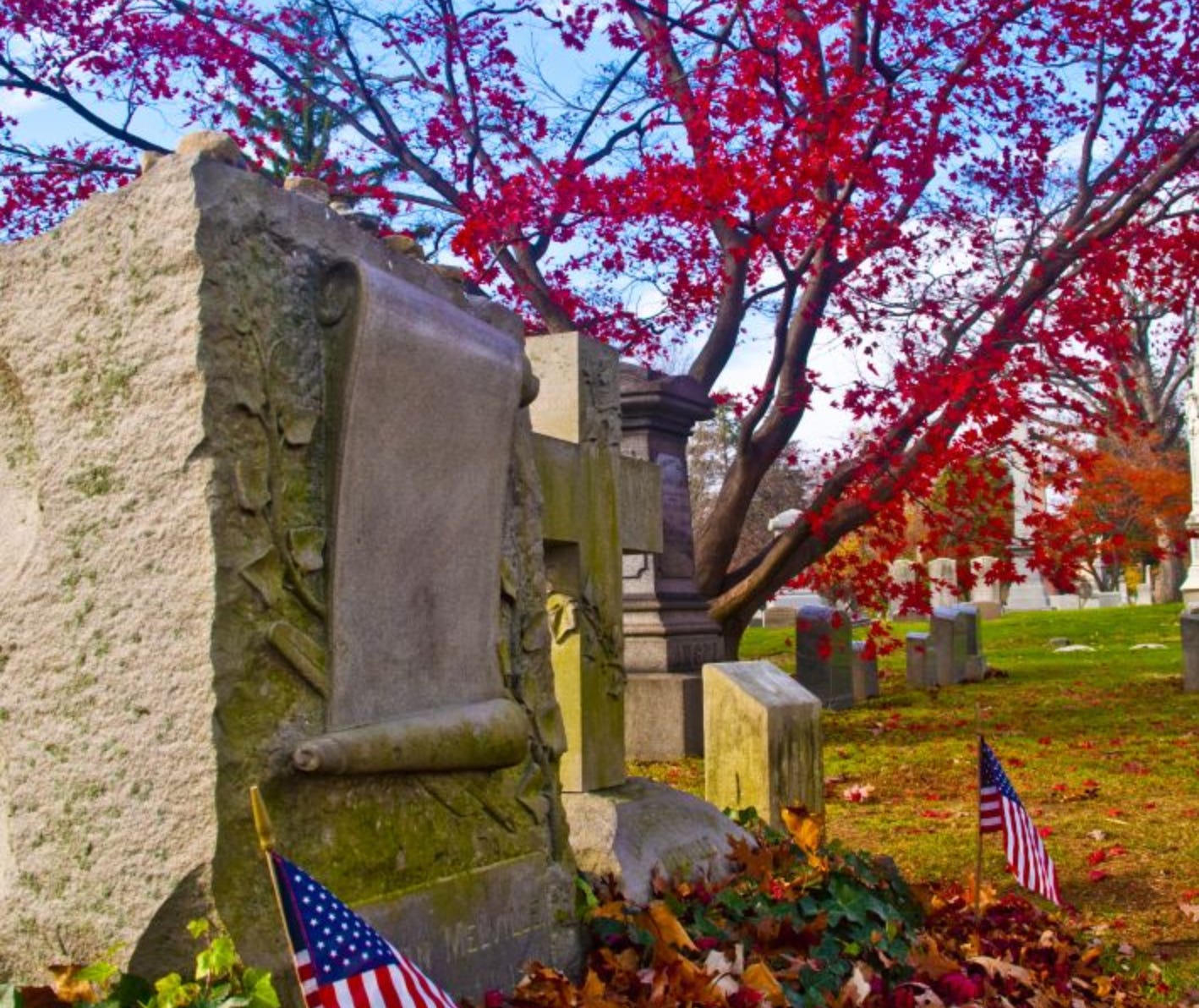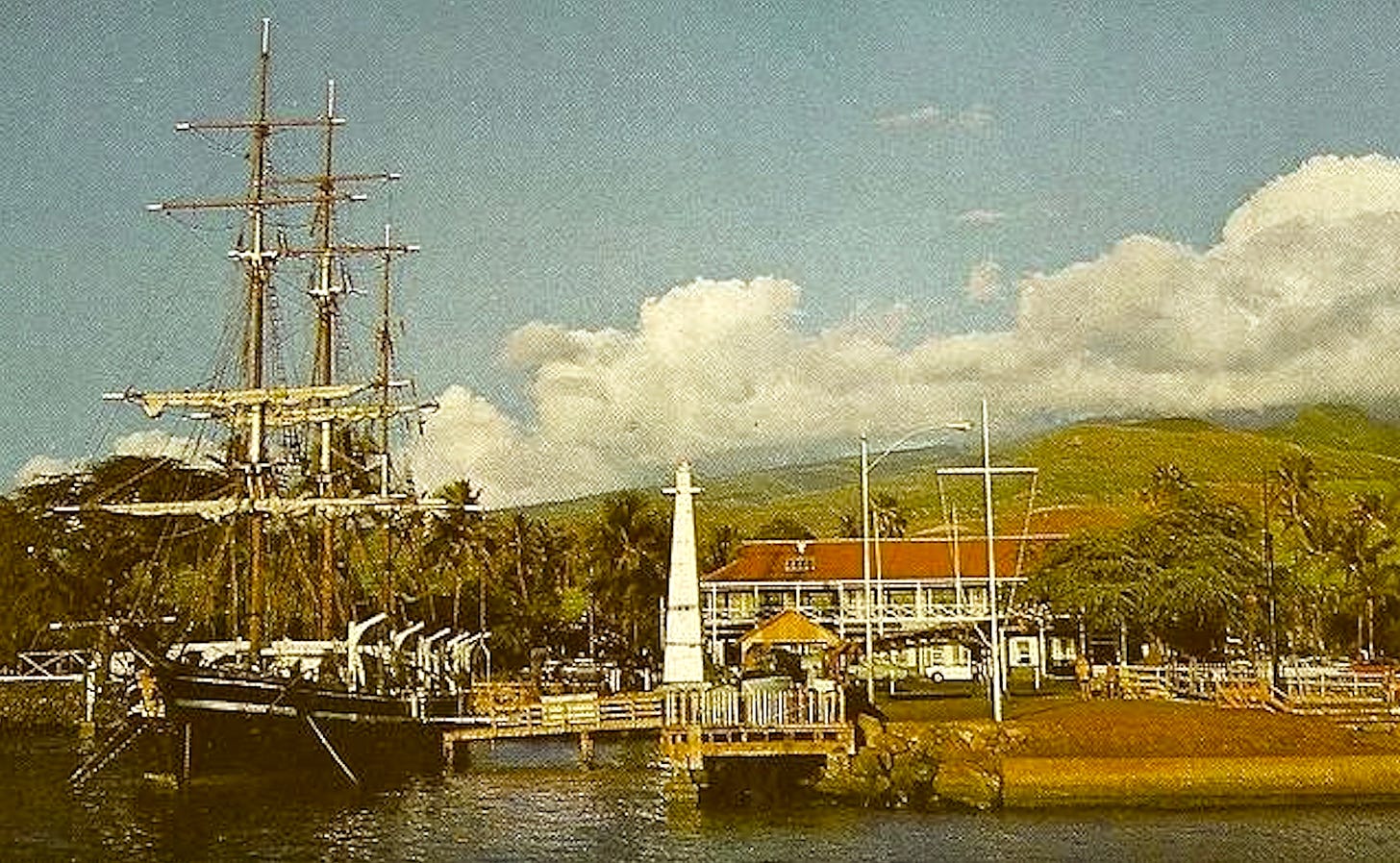Ed. Note: When my grandparents moved to Maui in the 1930s, they settled in Lahaina. That’s where my grandfather was as he watched several Japanese bombers fly overhead on the morning of December 7, 1941 (he’d been raised in Japan, and recognized the insignia, but it was only later that day that he realized their target had been Pearl Harbor).
Lahaina holds a special place in family lore, and I visited a lot when I was a kid. Both sets of my grandparents lived on Maui — my mother had grown up on the island, and my father’s parents moved there when he was a teenager — and every few of summers we’d get to go for a month or two. Most of our time was spent either at the beach in Wailea, or upcountry in Makawao, but each visit involved at least one trip to Lahaina; in 1980s Maui, it felt like the big city — though, given all the whalery, it was really more like a New England fishing village, albeit with a much better climate.
That seemingly better climate took a turn this week. If you’ve been following the stories of the wildfires that have devastated Lahaina at all, you’ve probably read about the historic banyan tree in the center of town, which had been planted 150 years ago. As a kid I was obsessed with banyan trees — my dad’s folks had a big one in the back yard in Makawao, with vines seemingly engineered to encourage a 10-year-old to swing like Tarzan. When I first heard about the fires in Lahaina, my thoughts immediately went to the tree — which feels more and more like a case of misplaced priorities as the actual death toll grows. But it was — is — an amazing tree.
If you’re able to lend a hand, and help the people of Maui get back on their feet, please consider making a donation. You can find some worthy charities here.
Please enjoy this free preview, and consider upgrading to support two struggling journalists.
— David
Herman Melville’s grave is in the Bronx, and it is quite modest. Not even modest by the standards of an American literary giant, one whose works are referenced on the daily in the most mundane and unlikely of contexts, or whose most famous work is often considered the definitive great American novel, such that everybody who’s attempted to scale that peak since October 1851 might as well not have gotten out of bed. (I tend to agree with this opinion, but get out of bed anyway, on the grounds that I’m writing nonfiction). At any rate, if you stroll into the green expanse of Woodlawn Cemetery, you will not be greeted by a gigantic whale-shaped mausoleum, or a tomb bedecked with green sea glass, just a gray modest tombstone with a blank unfurled scroll on it, and some rather workmanlike carvings of ivy, and his wife beside him, under a cross.
This seems rather unfair until you consider that Melville spent most of his life broke. His father had been broke — and borrowed a lot — and died young, and there were eight kids, so Herman was working as a bank clerk by the age of fourteen. He kept trying to go back to school and finding that school was beyond his family’s means.
It was this kind of congenital brokeness that led young Herman to sign on as a ship’s boy on a whaling vessel in 1839, at the age of twenty. He went around the world and back again, and in 1841 he shipped out once more — this time on the whaler Acushnet. Cue three years amid burning blubber and the turbid seas of the South Pacific, plus an escape from shipboard life, some general wanderings around the lissome vicinities of Tahiti and similar, and an eventual return, aboard a Nantucket whaler. Well, not a return to New York per se — they discharged him in Lahaina, Maui, in Hawaii, which is important for the purposes of this column.
Lahaina was a popular stop for whalers. You can hear it immortalized in the shanty “Old Maui”
It's a damn tough life full of toil and strife
We whalermen undergo
And we won't give a damn when the gale is done
How hard the winds do blow
For we're homeward bound from the Arctic Ground
With a good ship taut and free
And we don't give a damn when we drink our rum
With the girls of Old Maui.
Melville spent three months in Lahaina, working as bookkeeper, and taking in the sights, sounds, and smells that he would later regurgitate in his novels as chips and flecks of diamond. Then, on August 20, 1843 — 180 years ago this week — he enlisted in the U.S. Navy, and set out to sea once more.
On his return to New York a year later he started to write. One of the books he wrote was a commercial success — Typee, a florid, quasi-factual accounting of his youthful wanderings around exotic Polynesia, a hit with mid-nineteenth-century Americans who, conveniently, weren’t likely to go to Tahiti to check up on any exaggerations. In Mardi: And a Voyage Thither, he returned to his adventures in the South Pacific:
“The vessel was the Parki, of Lahina, a village and harbor on the coast of Mowee, one of the Hawaian isles, where she had been miserably cobbled together with planks of native wood, and fragments of a wreck, there drifted ashore.”
“Lahina” is Lahaina, of course, and “Mowee” is Maui. Later in the book, Melville describes witnessing the native islanders riding long wooden boards in the surf, a portion of which is excerpted below. The book didn't sell very well at all.
Keep reading with a 7-day free trial
Subscribe to The Sword and the Sandwich to keep reading this post and get 7 days of free access to the full post archives.






